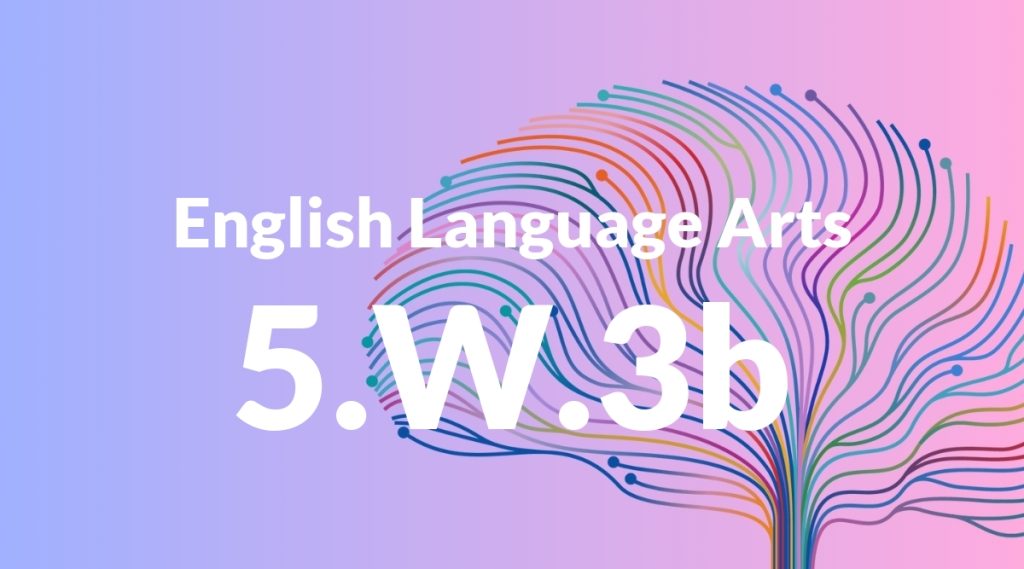Standard: 5.W.3b – Use narrative techniques, such as dialogue, description, and pacing, to develop experiences and events or show the responses of characters to situations.
Grade level: Grade 5
Subject: English Language Arts
Domain: Writing
Teacher Overview
This standard emphasizes the use of narrative techniques to enrich storytelling. It is crucial for students to learn how to use dialogue, description, and pacing to create engaging and well-developed narratives. Mastery of these techniques will enhance their ability to convey experiences and emotions effectively. Students should be comfortable with basic narrative elements and have some experience writing simple stories. They should also understand how to use descriptive language and basic dialogue.
Students will be prepared to tackle more advanced narrative writing, using sophisticated techniques to enhance their storytelling. They will be able to engage readers with well-developed characters and events.
Common Misconception 1
Some students may rely solely on dialogue to tell their story, neglecting other important narrative techniques. This approach can result in underdeveloped characters and events.
Intervention 1
Provide examples of well-rounded narratives that use a mix of dialogue, description, and pacing. Have students practice writing short scenes that incorporate all three techniques.
Common Misconception 2
Students might misunderstand pacing, thinking it only refers to how quickly events happen. They may not realize its role in creating suspense or maintaining reader interest.
Intervention 2
Use mentor texts to show how authors manipulate pacing. Have students experiment with pacing in their own writing, adjusting the speed of events to create different effects.
Prerequisite Knowledge
Students should have a basic understanding of narrative structure, including beginning, middle, and end, as well as familiarity with basic descriptive language and simple dialogue.
Subsequent Knowledge
After mastering this standard, students will be able to craft more complex narratives, incorporating advanced techniques such as flashbacks, foreshadowing, and varied sentence structures to enhance their storytelling.
Instructional Activities
- Have students write a short story that includes at least three instances of dialogue, vivid descriptions, and varied pacing.
- Conduct a peer review session where students give feedback on each other’s use of narrative techniques.
- Create a class anthology of personal narratives that showcase effective use of dialogue, description, and pacing.
- Use graphic organizers to help students plan their narratives, focusing on how they will incorporate the three techniques.




